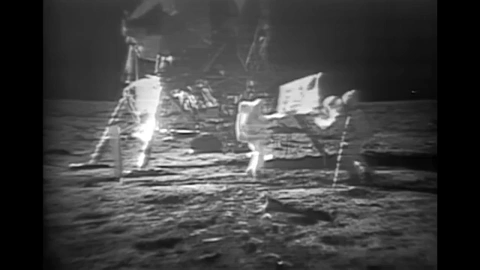
It’s 1969 and Apollo 11 astronauts Buzz Aldrin and Neil Armstrong are the first humans to land on the Moon. In now iconic footage, Aldrin and Armstrong carefully assemble and maneuver an American flag to place on the lunar surface. The fabric unfurls, staying suspended without any wind to animate the stars and stripes. The flagpole sways precariously as the crew work to anchor it in the Moon’s low gravity at just 1/6th that of Earth’s.
How did this moment come about? On Flag Day, let’s dive behind-the-scenes of what led to getting the American flag on the Moon 50 years ago.
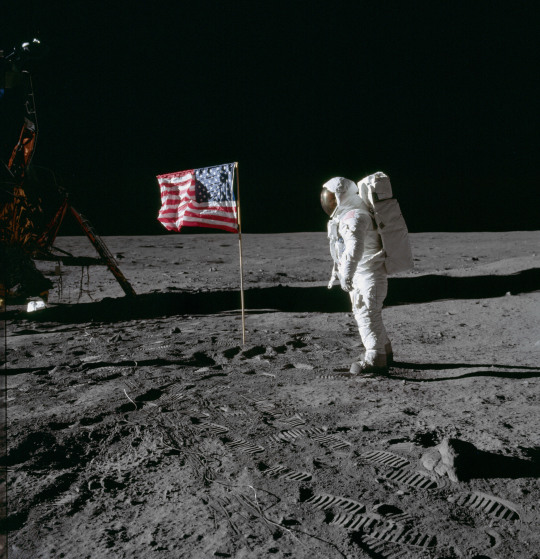
Image: Astronaut Buzz Aldrin poses for a photograph beside the deployed United States flag during the Apollo 11 mission.
Seeking to empower the nation, President John F. Kennedy gave us a grand charge. The human spaceflight program of the early 1960s was challenged to work on missions that sent humans to the surface of another world. Following President Kennedy’s death in 1963, President Richard Nixon stressed a more international perspective to the Apollo missions. To reconcile the need for global diplomacy with national interests, we appointed the Committee on Symbolic Activities for the First Lunar Landing.
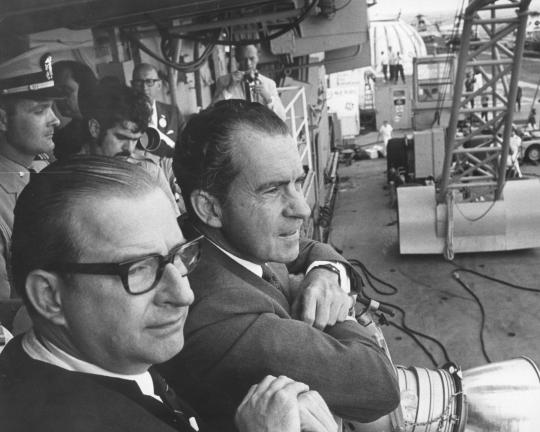
Image: NASA Administrator Thomas Paine and President Richard Nixon are seen aboard the USS Hornet, Apollo 11’s splashdown recovery vessel.
The committee, and the U.S. at large, wanted to avoid violating the United Nations Outer Space Treaty, which prohibited any nation from taking possession of a celestial body. After some debate, they recommended that the flag only appear during the Apollo 11 spacewalk. A plaque would accompany it, explaining that the flag was meant to stand for peaceful exploration, not conquest.

Image: The plaque reads “Here men from the planet Earth first set foot upon the Moon July 1969 A.D. We came in peace for all of mankind.” Under the text are signatures by President Nixon, Buzz Aldrin, Neil Armstrong, and Michael Collins.
A team of engineers at Johnson Space Center had three months to resolve several issues regarding the flag’s assembly. First, was the Moon’s lack of atmosphere. The flag, quite literally, could not fly the way it does on Earth. To address this, a horizontal crossbar was added to support the flag’s weight and give the illusion of it waving.

Image: NASA technician David L. McCraw shows the flag next to a Lunar Module mockup.
Second was the flag’s assembly, which had to be as lightweight and compact as possible so as not to take up limited storage space. The completed package, which was attached to Lunar Module’s ladder, weighed just under ten pounds. It received an outer case made of steel, aluminum, and Thermoflex insulation and blanketing to shield the flag from the 2,000 degree Fahrenheit spike from the Eagle’s descent engine.
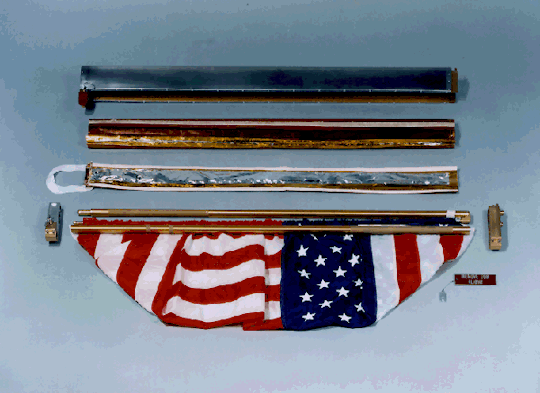
Image: Component pieces of the flag assembly.
The last issue was mobility. Bulky spacesuits significantly restricted the astronauts’ range of motion, and suit pressurization limited how much force they could apply. To accommodate these limits, the team included telescoping components to minimize the need to reach and maneuver the poles. A red painted ring on the flagpole indicated how far into the ground it should be driven. Hinges and catches would lock into place once the pieces were fully extended.

Image: Diagram from the 1969 Apollo 11 press release illustrating astronaut spacesuit reach capabilities and ideal working height.
Fifty years after Apollo 11, the flag we planted on the lunar surface has likely faded but its presence looms large in United States history as a symbol of American progress and innovation.
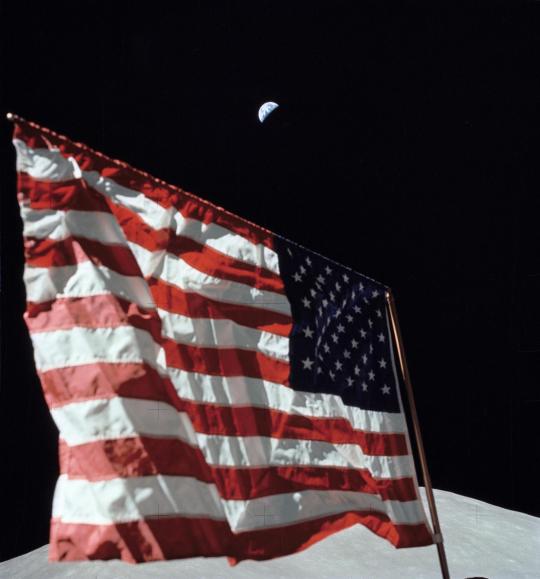
Image: A close-up view of the U.S. flag deployed on the Moon at the Taurus-by the crew of Apollo 17, the most recent lunar landing mission.
The story doesn’t stop here. Anne Platoff’s article “Where No Flag Has Gone Before” sheds more light on the context and technical process of putting the United States flag on the Moon. You can also check out Johnson Space Center’s recent feature story that details its presence in later missions.
Happy Flag Day!
Make sure to follow us on Tumblr for your regular dose of space: http://nasa.tumblr.com.





Комментариев нет:
Отправить комментарий